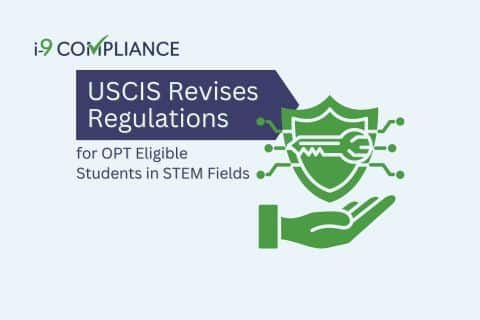USCIS Revises Regulations for OPT Eligible Students in STEM Fields

The U.S. Citizenship and Immigration Services (USCIS) recently announced that it will update work authorization programs for qualified F-1 students in the United States. This extension may extend work authorization for foreign national students studying science, technology, engineering, and math (STEM). It also expands flexibility when changing schools or degrees.
These changes will primarily affect F-1 students who can acquire authorization to work off campus under the Optional Practical Training (OPT) program and the Science, Technology, Engineering, and Mathematics Optional Practical Training Extension (STEM OPT). The OPT and STEM OPT programs allow students to acquire employment in positions related to their fields of study. However, they must receive approval from their designated school official and the USCIS.
These students can receive work authorization before completing their studies under pre-completion OPT or after with post-completion OPT. As such, post-completion OPT students can work for 12 months at a bachelor’s degree level, 24 at a master’s, and 36 at the doctoral level.
On August 27, 2024, the USCIS announced that it updated its guidelines for F-1 students in STEM-related degree programs. These updated policy guidelines took effect immediately and created numerous changes, including clarifications of existing policies and adjustments to existing policies.
According to the USCIS, the policy accomplishes the following:
- Clarifies that students may count one class or three credits (or the equivalent) during each term or semester toward a full course of study when attending online or distance learning; does not require physical attendance for any purpose integral to the completion of the class.
- Explains that students may transfer between SEVP-certified schools at the same educational level or move between levels.
- Explains that students may change their education level, transfer to another SEVP-certified school, or file an application or petition with USCIS to change to another nonimmigrant or immigrant status during the 60-day grace period following an authorized period of post-completion of OPT.
- Clarifies that students may qualify for post-completion OPT after completing an associate’s, bachelor’s, master’s, or doctoral degree program.
- Corrects the period students may apply for STEM OPT extensions and makes other technical corrections.
- Clarifies that a student enrolled in an ICE SEVP-certified school during a study abroad program may remain active in SEVIS if the program lasts less than five months, but requires the student to submit a new Form I-20 for programs lasting longer than five months.
Employers will likely welcome these changes, which increase eligibility and flexibility for these skilled workers. However, employer responsibilities when hiring these individuals will remain the same, such as complying with the employment eligibility verification (Form I-9) process.
One of the best ways to maintain compliance is to incorporate an electronic I-9 management system. This tool provides guidance throughout the verification process, digital storage for forms and related documentation, and an optional E-Verify integration for employers using the federal government’s web-based system.
Increase your hiring and verification efficiency today with I-9 Compliance automation.